
- Discover the History of Montserrat Monastery: A Spiritual Journey
- Essential Tips for Visiting Montserrat Monastery: Opening Times and Access
- Must-See Attractions at Montserrat Monastery: Highlights for Every Visitor
- Exploring the Natural Beauty Surrounding Montserrat Monastery
- Cultural Significance of Montserrat Monastery: Art and Traditions
- How to Get to Montserrat Monastery: Travel Guide and Options
Nestled high in the mountains of Catalonia, the Montserrat Monastery is a breathtaking destination that combines spirituality, history, and stunning natural beauty. Visitors are drawn not only to its serene atmosphere but also to the remarkable views that surround this iconic site.
In this guide, we invite you to Discover the Montserrat Monastery: Opening Times and Must-See Attractions to ensure you make the most of your visit. From the famous Black Madonna to the spectacular hiking trails, Montserrat offers a unique experience for everyone who seeks to explore this remarkable sanctuary.
Discover the History of Montserrat Monastery: A Spiritual Journey
The history of Montserrat Monastery is steeped in spirituality and tradition, beginning in the 11th century when it was founded by a group of monks seeking a place of worship in the mountains. Over the centuries, it has become a significant pilgrimage site for those who wish to pay homage to the Black Madonna, a revered statue believed to hold miraculous powers. This rich heritage provides visitors with a profound connection to the past as they walk through its ancient hallways.
Throughout its existence, Montserrat has endured various trials, including invasions and natural disasters, yet it has remained a beacon of hope and faith. The monastery's resilience is reflected in its stunning architecture, which showcases a blend of Romanesque and Gothic styles. Among the must-see features are:
- The basilica housing the Black Madonna
- The museum featuring religious art and artifacts
- The scenic viewpoints that offer breathtaking panoramas of the surrounding landscape
As you explore Montserrat, you will discover that it is not just a physical journey but also a spiritual one. Many visitors find themselves reflecting on their own lives as they absorb the tranquil atmosphere of the monastery and engage with its rich spiritual practices. Attend a mass or listen to the famous boys' choir, which has been a part of Montserrat's tradition since the 13th century, to fully immerse yourself in this sacred experience.
In addition to its spiritual significance, Montserrat has also played a pivotal role in Catalonia's cultural identity. The monastery has served as a sanctuary during times of political unrest, making it a symbol of resilience. Here, visitors can appreciate the intricate relationship between history and spirituality, creating a unique space for contemplation and connection.
Essential Tips for Visiting Montserrat Monastery: Opening Times and Access
When planning your visit to the Montserrat Monastery, it’s essential to check the opening times to make the most of your experience. Generally, the monastery is open every day of the week, with the basilica accessible from early morning until evening. However, hours may vary seasonally, so it's advisable to confirm on their official website before your trip.
Accessing the monastery is convenient, with several options available. You can choose to travel by cable car, rack railway, or even hike if you're feeling adventurous. Here are the main access points:
- Cable Car: Offers stunning aerial views as you ascend.
- Rack Railway: A scenic train ride that provides a leisurely approach.
- Hiking Trails: Various routes lead to the monastery, suitable for different skill levels.
Keep in mind that the monastery is a popular destination, so arriving early can help you avoid crowds and enjoy a more peaceful experience. If you plan to attend a mass or a concert by the boys' choir, arriving ahead of time is recommended to secure a good spot.
Finally, it's advisable to dress appropriately, as Montserrat is a place of worship. Comfortable shoes are also a must, especially if you intend to explore the nearby hiking trails. Remember to bring a camera to capture the incredible landscapes and the stunning architecture of the monastery.
Must-See Attractions at Montserrat Monastery: Highlights for Every Visitor
When visiting Montserrat Monastery, one of the must-see attractions is the iconic Black Madonna, known locally as La Moreneta. This revered statue is housed in the basilica and attracts countless pilgrims and tourists alike. Don't miss the opportunity to touch the orb that she holds, which is believed to grant blessings to those who do.
Aside from the Black Madonna, the Museu de Montserrat is another highlight that showcases a remarkable collection of religious art and artifacts. Visitors can explore works by renowned artists like El Greco and Picasso, which provide a deep insight into the cultural significance of the monastery. The museum's diverse exhibits make it a fascinating stop for art enthusiasts.
For nature lovers, the scenic viewpoints surrounding the monastery offer breathtaking panoramas of the Catalonian landscape. Be sure to visit spots such as Sant Jeroni and the viewpoint of Mirador de la Creu, where you can soak in the stunning vistas that stretch as far as the eye can see. Here are a few notable viewpoints:
- Mirador de Sant Jeroni: The highest point accessible, providing the best views.
- Mirador de la Creu: Easily accessible and offers a unique perspective of the monastery.
- La Cadira de Tossa: A picturesque resting spot with ample photo opportunities.
Lastly, the opportunity to experience the Montserrat Boys' Choir is a highlight that should not be missed. Known as one of the oldest children's choirs in Europe, their performances resonate beautifully within the basilica, adding a sacred atmosphere to your visit. Attending a mass or concert here can be a profound experience, further connecting you to the spiritual essence of Montserrat.
Exploring the Natural Beauty Surrounding Montserrat Monastery
Exploring the natural beauty surrounding Montserrat Monastery is a breathtaking experience that complements the spiritual atmosphere of the site. The rugged peaks and unique rock formations create a stunning backdrop for visitors. As you wander the various trails, you'll be greeted by lush greenery, vibrant wildflowers, and panoramic views that showcase the dramatic landscape of Catalonia.
The hiking trails around Montserrat offer a range of options for all skill levels. Whether you prefer a leisurely stroll or a challenging hike, the paths provide opportunities to connect with nature. Some of the most popular trails include:
- Camí de Sant Jeroni: A steep hike leading to the highest point, with breathtaking views of the monastery.
- Camí de les Pales: A scenic path that winds through picturesque rock formations.
- Sendero de Santa Cova: A trail that takes you to the shrine of the Black Madonna, rich in history.
In addition to the hiking, the surrounding area is home to diverse wildlife, including various bird species and unique flora. Birdwatchers will delight in spotting eagles and vultures, while nature enthusiasts can marvel at the endemic plants that thrive in this rugged environment. The tranquility of the landscape provides a perfect escape from the hustle and bustle of daily life.
As you take in the views and soak up the serene atmosphere, consider pausing at one of the many viewpoints to reflect on the beauty of the moment. The combination of spiritual significance and natural wonder makes Montserrat a truly special destination for anyone seeking adventure and contemplation in equal measure.
Cultural Significance of Montserrat Monastery: Art and Traditions
The Montserrat Monastery is not only a spiritual haven but also a repository of Catalonia's rich cultural heritage. Its art collections include masterpieces that reflect the region's diverse artistic traditions. Among the notable pieces are works by renowned artists such as El Greco and Picasso, which showcase the monastery's long-standing commitment to preserving cultural expressions through art. These collections offer visitors a glimpse into the interplay between faith and creativity that has flourished here over the centuries.
Moreover, Montserrat is steeped in traditions that are integral to Catalan identity. The Montserrat Boys' Choir, one of the oldest children's choirs in Europe, plays a central role in the monastery's cultural landscape. Their performances, often held in the basilica, are infused with a sense of reverence and community, making them a cherished tradition that connects generations. Attending one of these performances allows visitors to experience the unique blend of spirituality and artistry that defines Montserrat.
Another vital aspect of Montserrat's cultural significance is its role during significant historical events. The monastery has served as a refuge and a symbol of hope during periods of conflict, particularly during the Spanish Civil War. This resilience has fostered a deep sense of pride among the local population, making Montserrat a poignant reminder of Catalonia's struggle for identity and autonomy. Visitors can witness how these historical narratives are interwoven with the daily life of the monastery, enhancing its allure as a cultural landmark.
In addition to its artistic and historical contributions, Montserrat celebrates various traditional festivals that highlight its vibrant community. Events such as the Feast of the Black Madonna attract pilgrims and tourists alike, showcasing local customs and spiritual rites that have been passed down through generations. These gatherings not only foster a sense of belonging but also provide an immersive experience that allows visitors to engage with Catalonia's living cultural heritage.
How to Get to Montserrat Monastery: Travel Guide and Options
Getting to Montserrat Monastery is straightforward, with several transport options catering to different preferences and budgets. The most popular methods include taking a train from Barcelona, which connects to the Montserrat Rack Railway or the Cable Car, both offering scenic views as you ascend the mountains. Trains depart regularly from Plaça Espanya, making it a convenient starting point for your journey.
For those who prefer to drive, renting a car provides flexibility and the chance to explore the stunning Catalonian landscape at your own pace. There are designated parking areas available near the base of the monastery. Here’s a quick comparison of travel options:
| Transport Method | Duration | Cost |
|---|---|---|
| Train + Rack Railway | 1.5 hours | Approx. €20 |
| Train + Cable Car | 1.5 hours | Approx. €20 |
| Driving | 1 hour | Variable (rental + fuel) |
For the adventurous souls, hiking to Montserrat is also a thrilling option, with numerous trails leading up to the monastery. The Camí de Sant Jeroni is a popular choice, offering breathtaking views along the way. Whichever mode of transport you choose, ensure to check the schedules in advance, especially during peak seasons, to enhance your experience and avoid delays.
Lastly, if you’re visiting during religious events or choir performances, it's advisable to plan your trip early in the day. This strategy will not only help you avoid crowds but also allow you to fully immerse yourself in the spiritual ambiance of Montserrat. Don't forget to bring comfortable footwear if you intend to explore the hiking trails or surrounding areas!
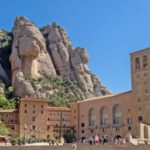 Convenient Montserrat Monastery Parking: Your Guide to Hassle-Free Visits
Convenient Montserrat Monastery Parking: Your Guide to Hassle-Free Visits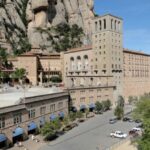 Captivating Montserrat Monastery: A Picture-Perfect Retreat
Captivating Montserrat Monastery: A Picture-Perfect Retreat Experience Tranquility: Making a Montserrat Monastery Reservation in Barcelona
Experience Tranquility: Making a Montserrat Monastery Reservation in Barcelona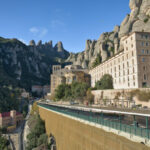 Exploring Montserrat Monastery: Weather and Tips for a Memorable Visit
Exploring Montserrat Monastery: Weather and Tips for a Memorable Visit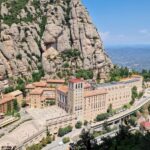 Discover the Beauty of Montserrat Monastery Through Captivating Video Footage
Discover the Beauty of Montserrat Monastery Through Captivating Video Footage What to Do at Montserrat Monastery: A Spiritual and Cultural Journey
What to Do at Montserrat Monastery: A Spiritual and Cultural JourneyIf you want to know other articles similar to Discover the Montserrat Monastery: Opening Times and Must-See Attractions you can visit the category WHERE YOU CAN GO.
Deja una respuesta

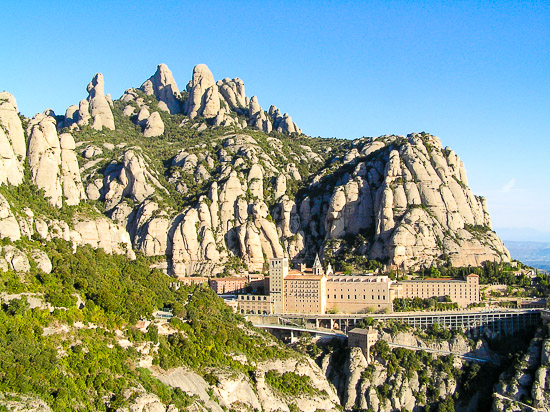








Read more!